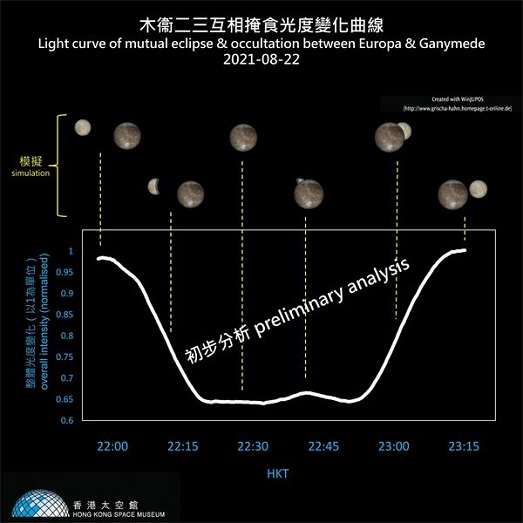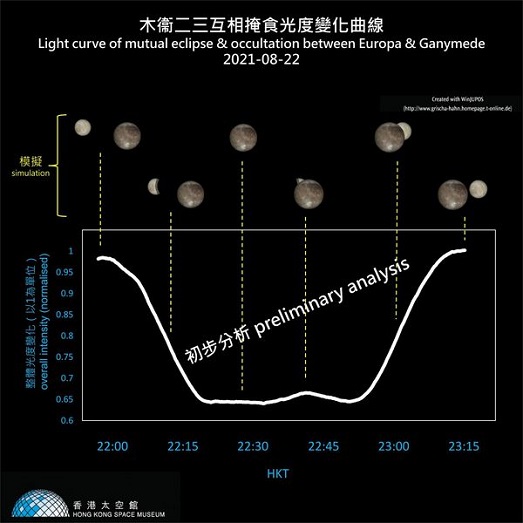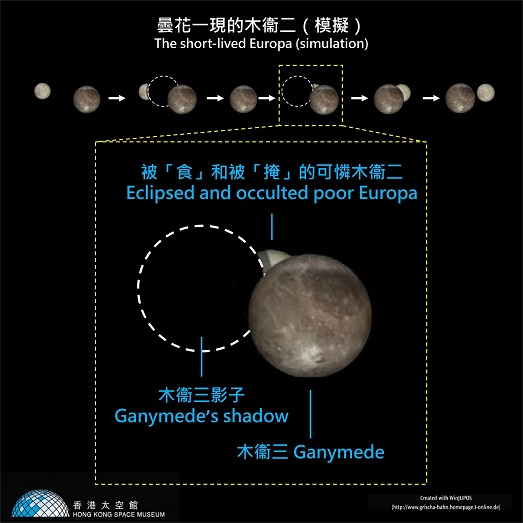We'd waited three years for the serial phenomena of Jupiter's moons on 15-16 August. Oops... it was overcast.
With a bit of luck, we successfully observed three individual Mutual Phenomena on 22 and 23 August.
The two events that appeared on the night of 22 August are quite special. First, Ganymede eclipsed Europa (i.e., Europa entered Ganymede's shadow). Then Ganymede occulted Europa (i.e., Ganymede blocked Europa) before Europa leaving Ganymede's shadow. The whole process lasted about 1.5 hour.
We made astronomical photometric observations during that time.
The first image is the light curve of the overall brightness of Europa and Ganymede. Preliminary analysis shows that there is a gradual decrease of light (up to about 35%) during the eclipse. When the occultation ended, the overall brightness resumed. Look closer, there is a bump near 22:45. That amount of small (2-3%) brightness increase was attributed to the short-lived Europa when it was leaving Ganymede's shadow but was partially blocked by Ganymede.
The observations of mutual eclipses and occultations allow us to obtain high-precision position and relative motion of moons, to improve their dynamical models, understand tidal effects and even shed light on their internal structure. More works are needed to analyse the light curve.
Latest news! (Last update: 9 December 2022)
The team has submitted a paper on the analysis of the quasi-simultaneous mutual events of Jupiter's moons on 22 August 2021. The paper has been accepted by the planetary science journal, Icarus, and will be published on Volume 392, March 2023. Preview of the paper is available at:
Paper: https://doi.org/10.1016/j.icarus.2022.115348
Paper e-print: https://arxiv.org/abs/2212.05215





